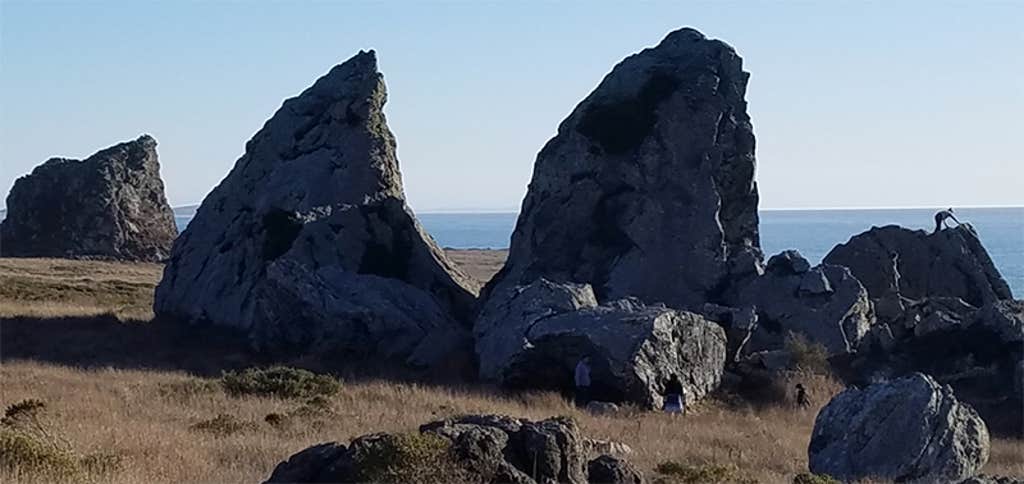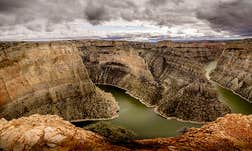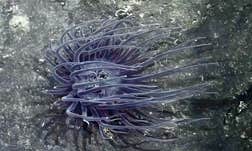When an elephant needs salt, it will remove mountains to get it. And on the flanks of Mount Elgon—a dormant volcano straddling the border between Kenya and Uganda—that is exactly what generations of elephants did, carving ballroom-sized caves in its side as lasting evidence of their saline cravings. As far as rocks go, the volcanic sediments gouged by their tusks were relatively soft, but solid enough to form the foundation of the mountain.
At some point in the past 10,000 years or so, a few African elephants (Loxodonta africana) discovered these mineral deposits, began breaking up the rock with their tusks, and used their trunks to ingest chunks of the salt-laden rock. Knowledge of these deposits, such as where to find them and how to mine them, was apparently passed down from matriarch to matriarch, and hence from generation to generation. Over time, the elephants wore down paths leading to and from the mountain with their creation of Kitum Cave and more than 30 other caves on its eastern side, some as large as 500 feet deep by 200 feet wide.
Some big holes in rocks labeled as “caves” might be the result of rock-eating.
Cave walls today are crisscrossed by tusk-wide and tusk-deep linear scratches from up, down, and sideways movements against the rock. This weakening of cave walls led to occasional ceiling collapses, which in turn heightened the floor and caused the elephants and the caves to move skyward.
Elephant droppings in and near the cave confirmed their rock-eating habits, adorned with chunks that had passed through as mineral supplements. All of these clues and actual eyewitnessing of elephants breaking apart and eating the bedrock led to the inevitable conclusion that these elephants, which can be as tall as 13.1 feet and weigh as much as 6 metric tons, are also the largest living bioeroders of rock. Such significant alterations of rocks by land mammals that are motivated by a need for salt or other minerals are either rare or underappreciated.

Geologists Charles Lundquist and William Varnedoe posited the latter, that some big holes in rocks simply labeled as “caves” might actually be the result of rock-eating behaviors by large herbivores. In a 2005 article, they termed such geologic features as “salt-ingestion caves,” with Kitum Cave and similar elephant-made caves in Kenya as prime examples. Other modern examples of caves formed by mammals licking or otherwise breaking down rocks include caves found in the Altai Mountains of central Asia, British Columbia, Cambodia, Malaysia, and Mississippi.
Do trace fossils of salt-ingestion caves exist as mega-borings carved by megafauna? Lundquist and Varnedoe suggested at least one example from Chile, la Cueva del Milodón. This and other nearby caves may have been made—or at least enlarged—by Pleistocene giant ground sloths, such as Mylodon darwinii, named after Charles Darwin. This cave-creation credit is assigned to Mylodon because its bones, patches of its hairy skin, and Mylodon-sized coprolites have been found in the caves.
Late in elephant history in the Americas, some mammoths and other megafauna initiated a different form of bioerosion, one that might have escaped our notice if not for modern animals doing the same. The elephantine evidence persists in rocks along the coast of California, and more specifically in Sonoma County wine country.
Large, hairy, and warm-blooded are all attractive qualities for parasites that can easily find and attach to mammals with such traits. Those animals with excessive parasites, such as lice and ticks, had to find ways to alleviate the itching and other discomforts caused by their inadvertent little passengers. So they rubbed, but being elephants, they rubbed grandly. Similar to the development of caves, many generations of mammoths, mastodons, ground sloths, camels, and other big mammals once native to North America probably contributed to polishing these rocks.
These outcrops and boulders of coastal Sonoma have been nicknamed the “Mammoth Rocks,” an appellation that succinctly but dramatically summarizes their proposed origin. ![]()
Lead image: UNEP / Flickr
Reprinted with permission from Life Sculpted: Tales of the Animals, Plants, and Fungi That Drill, Break, and Scrape to Shape the Earth by Anthony J. Martin, published by The University of Chicago Press. © 2023 by Anthony Martin. All rights reserved.




























